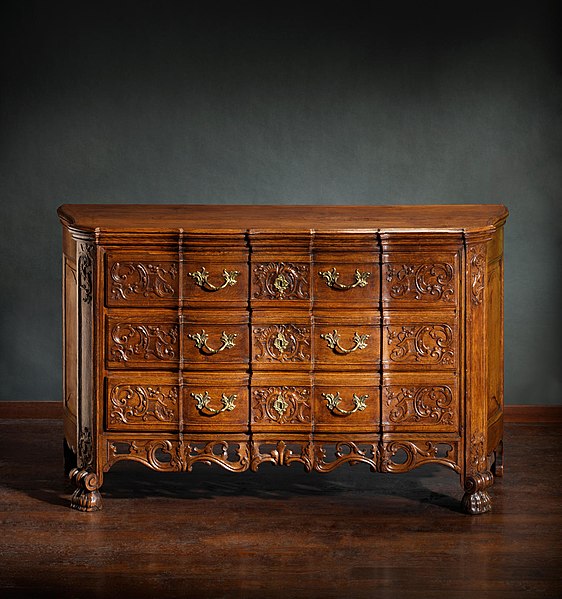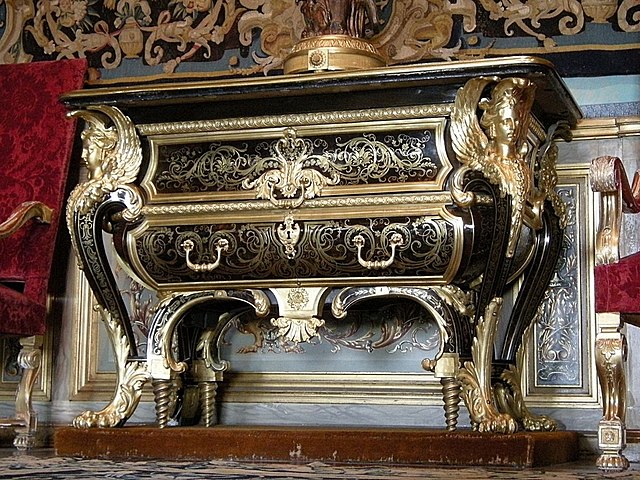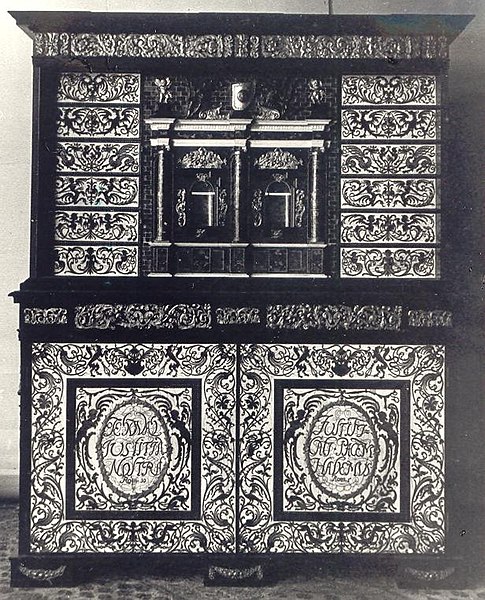A chest of drawers, also called a dresser or a bureau, is a type of cabinet that has multiple parallel, horizontal drawers generally stacked one above another.
Chest of drawers from the 18th century, collection King Baudouin Foundation
Chest of drawers, circa 1720, Kingwood with gilt-metal mounts and marble, Cleveland Museum of Art
Chippendale-style George III mahogany chest-on-chest, circa 1770
A chest-on-chest, a derivative of the simpler chest of drawers
A cabinet is a case or cupboard with shelves or drawers for storing or displaying items. Some cabinets are stand alone while others are built in to a wall or are attached to it like a medicine cabinet. Cabinets are typically made of wood, coated steel, or synthetic materials. Commercial grade cabinets usually have a melamine-particleboard substrate and are covered in a high-pressure decorative laminate, commonly referred to as Wilsonart or Formica.
Cabinet; by Francesco Del Tuppo; c. 1606–1623; oak and poplar veneered with various exotic hardwoods, with ebony moldings and plaques of marble, and various other materials; 59.1 × 96.8 × 35.9 cm; Metropolitan Museum of Art (New York City)
Commode by André-Charles Boulle at Vaux-le-Vicomte
Tortoise-shell cabinet of Polish king John III Sobieski, looted by the Germans from the Wilanów Palace during World War II
Crafted by Hughes Sambin (1570–1600), the double cabinet features the combination of architectural elements and relief carving that is characteristic of French furniture of the period.








